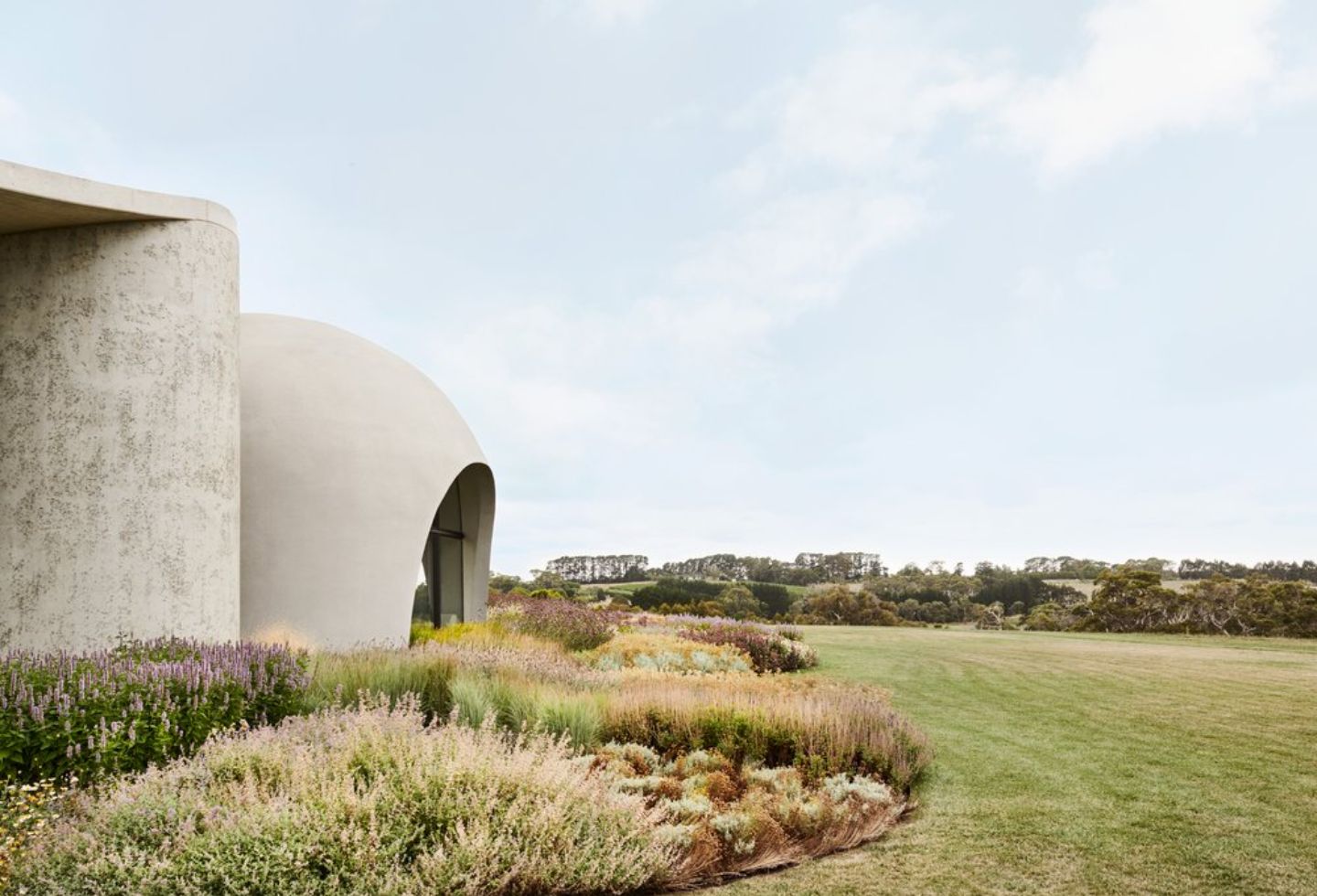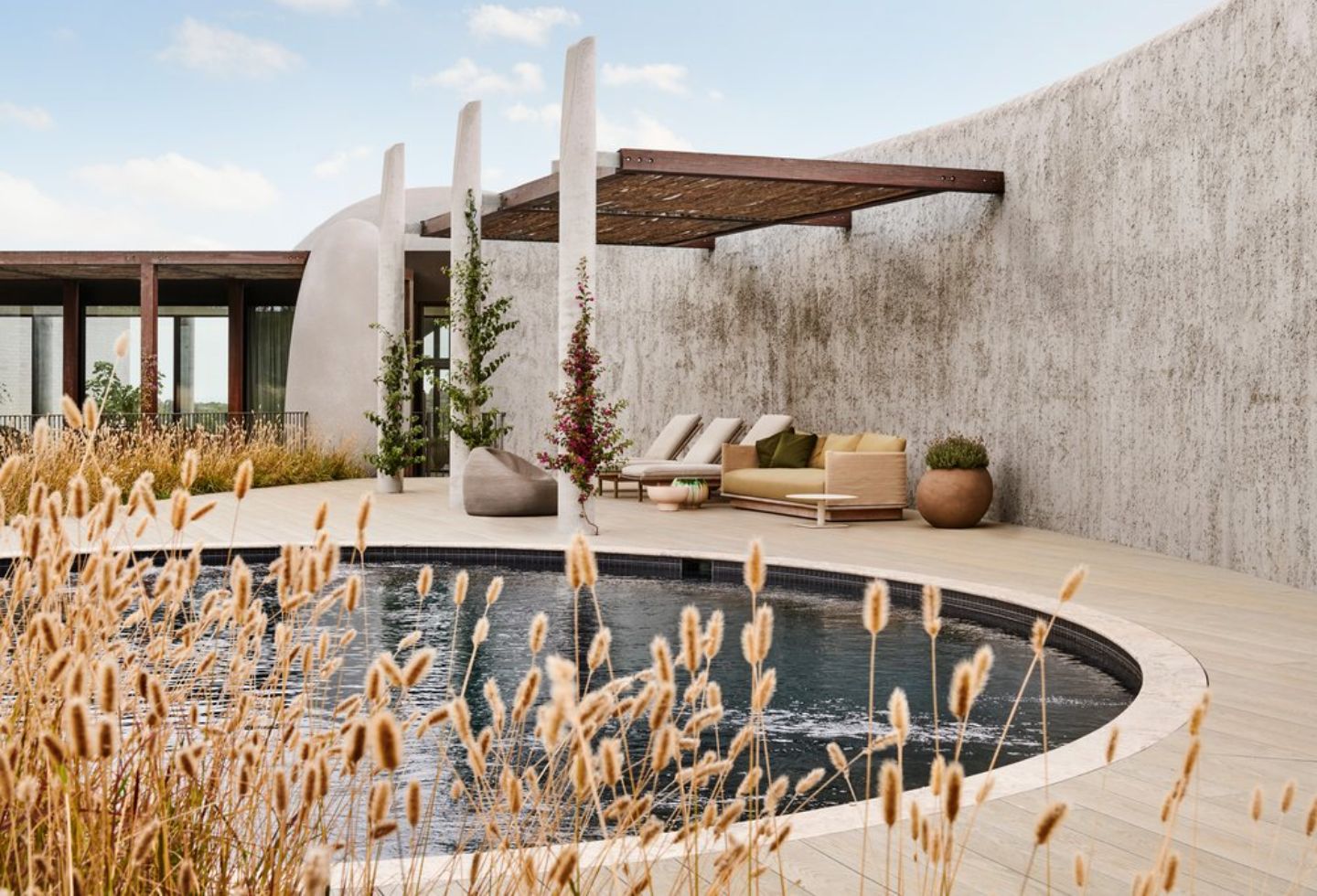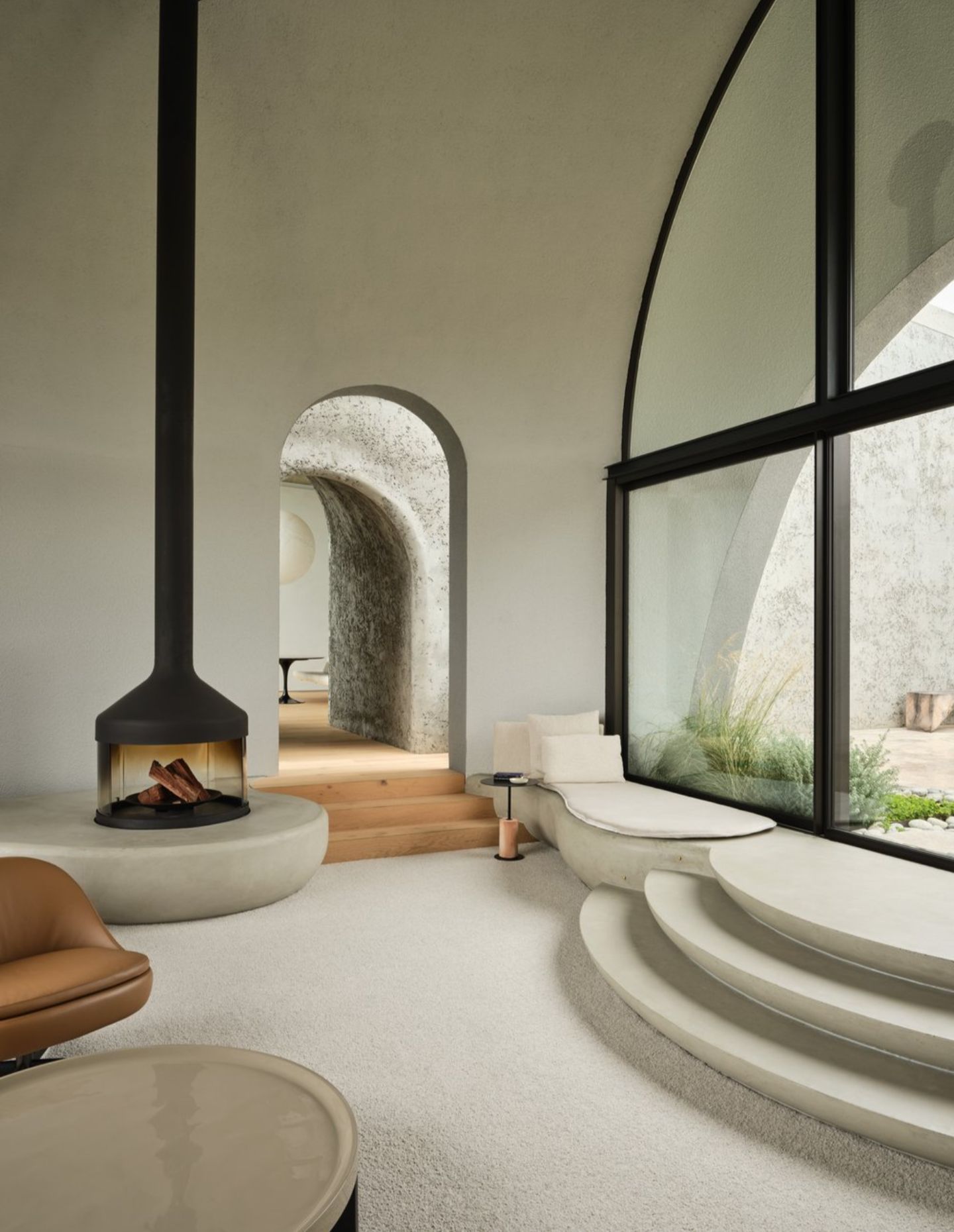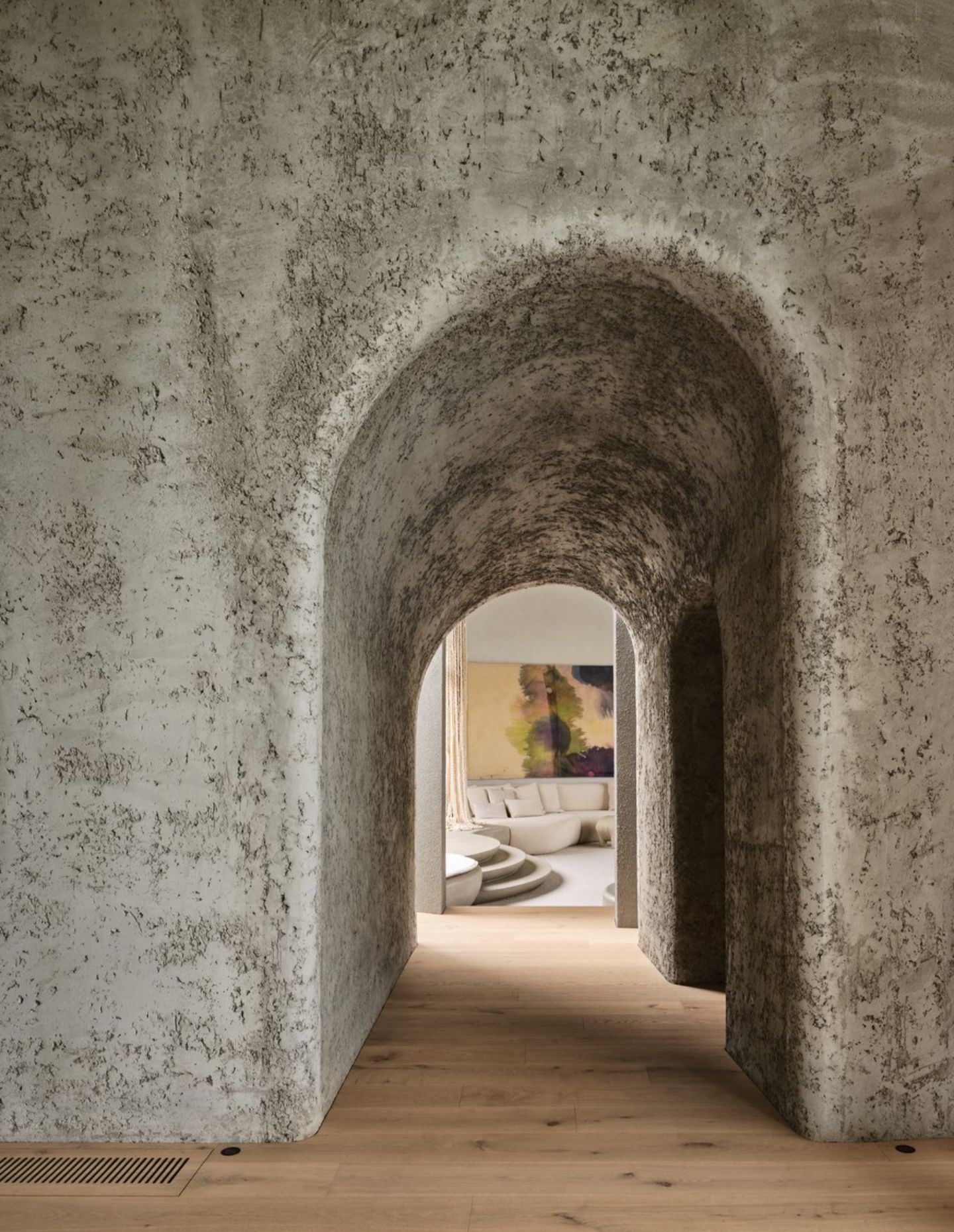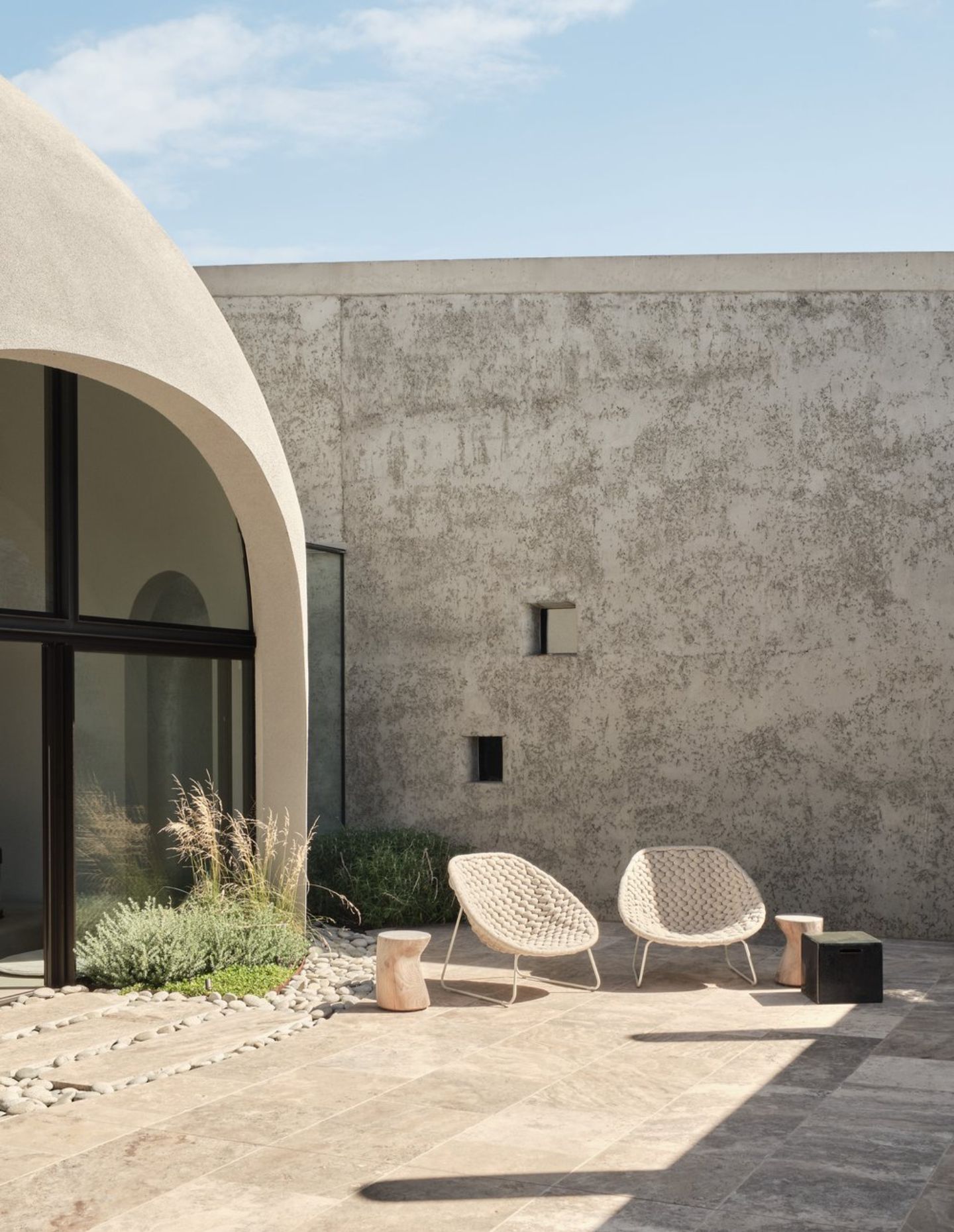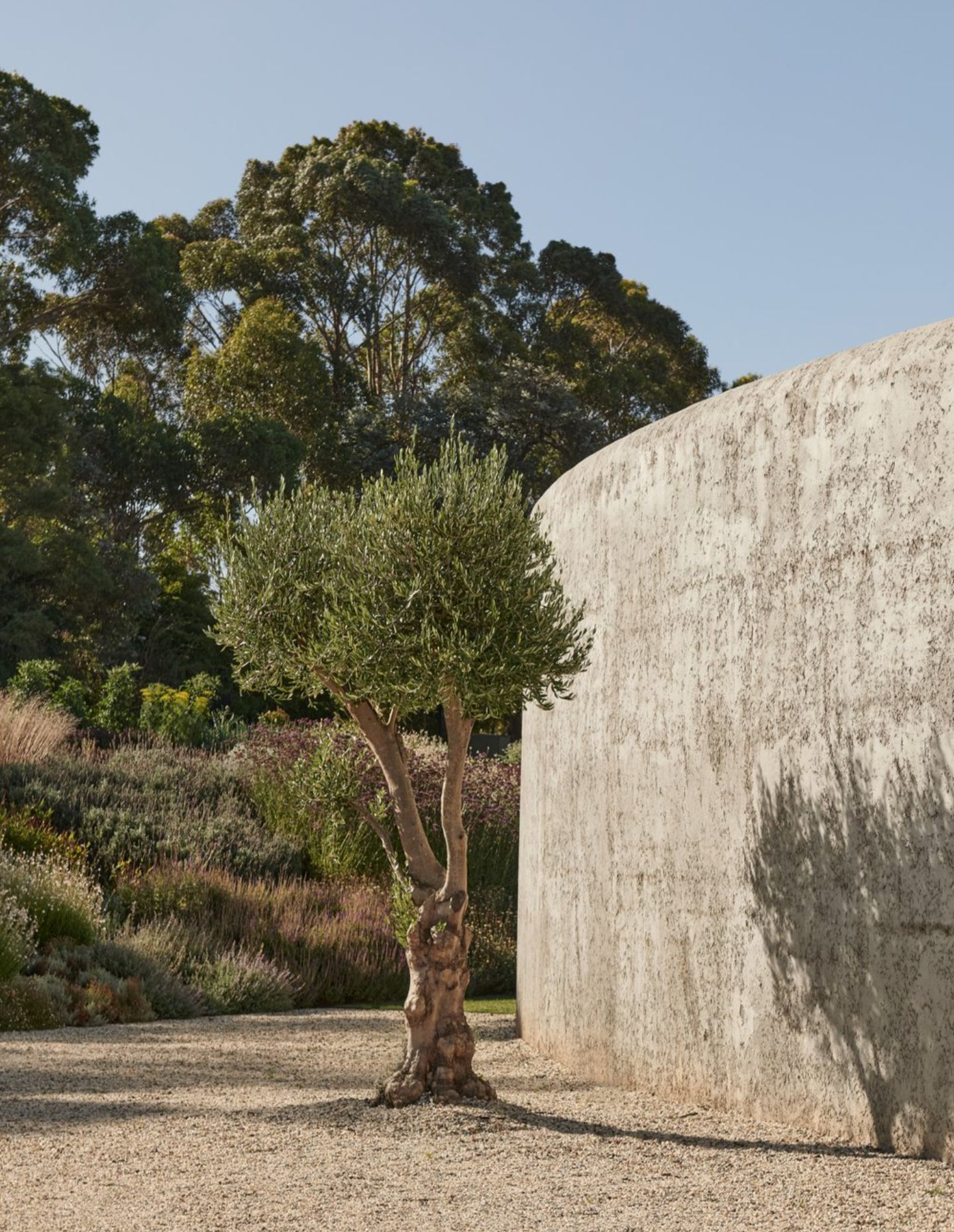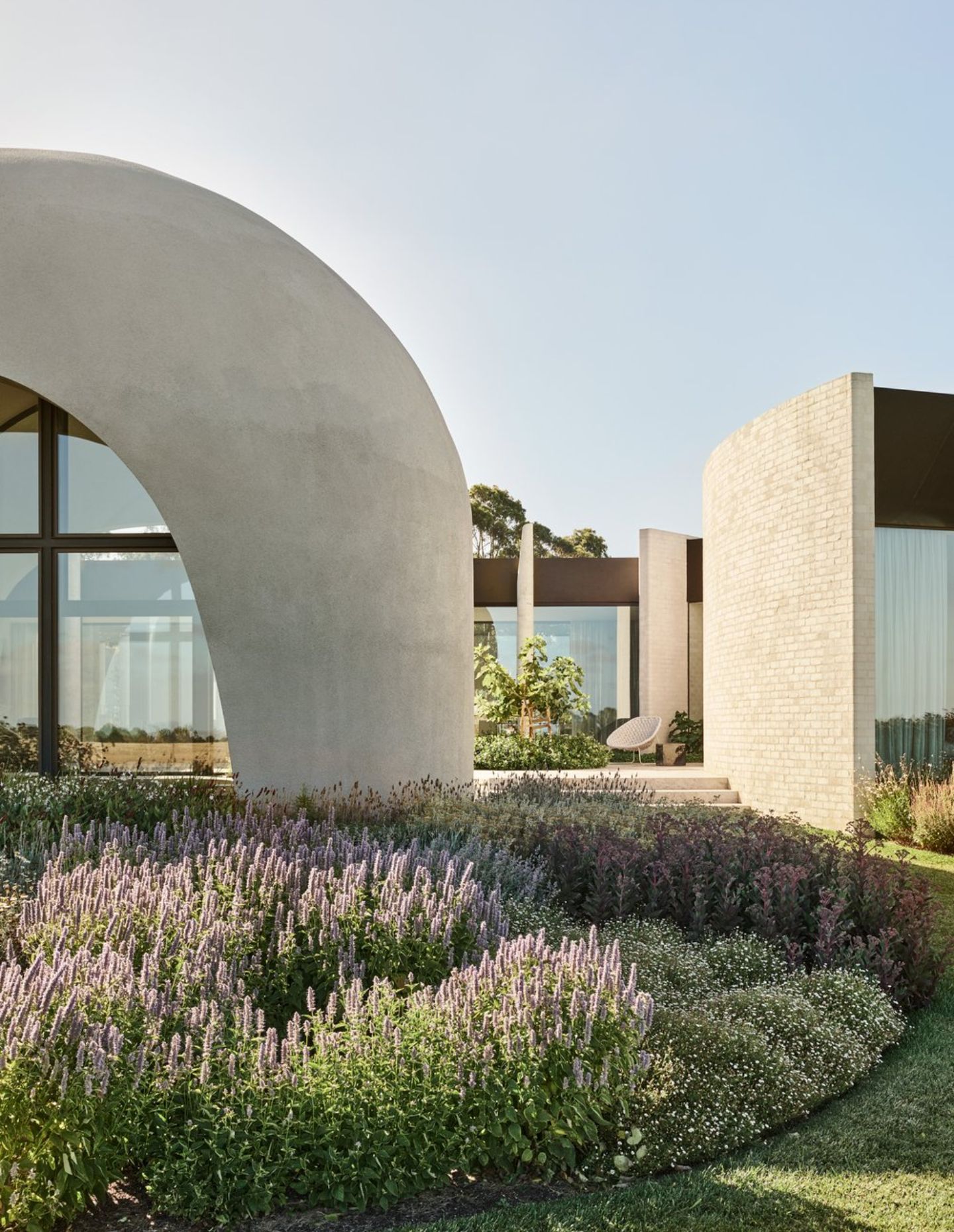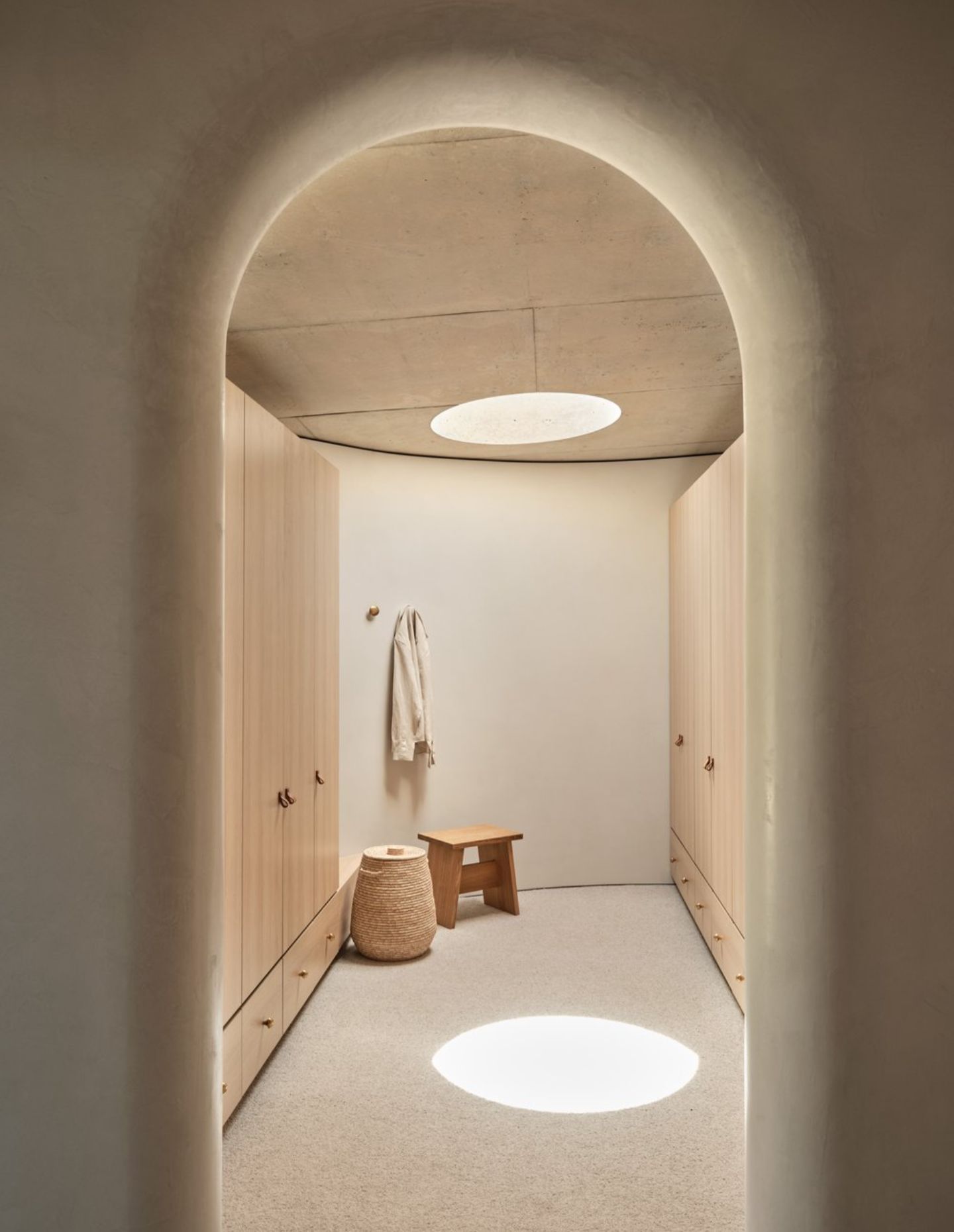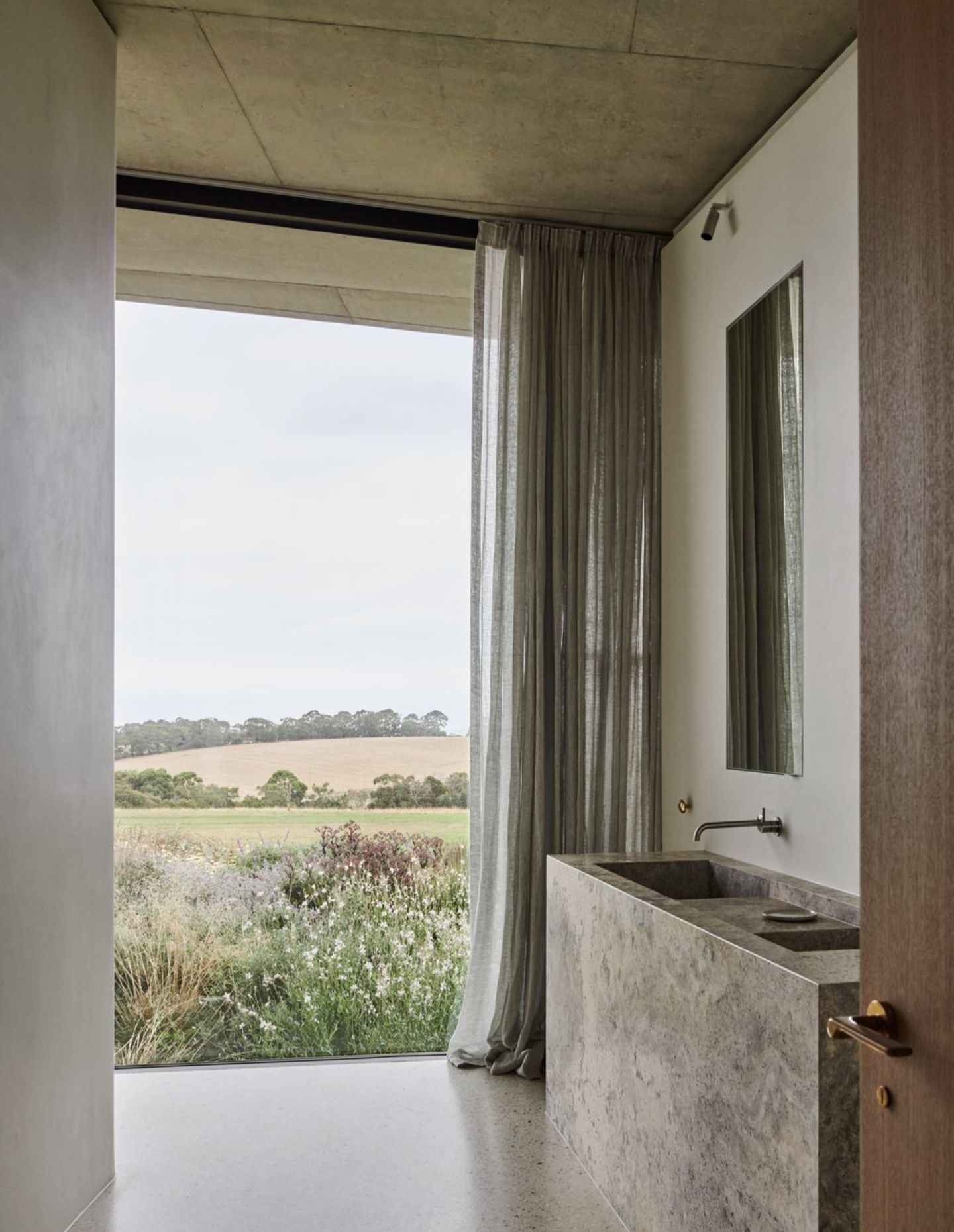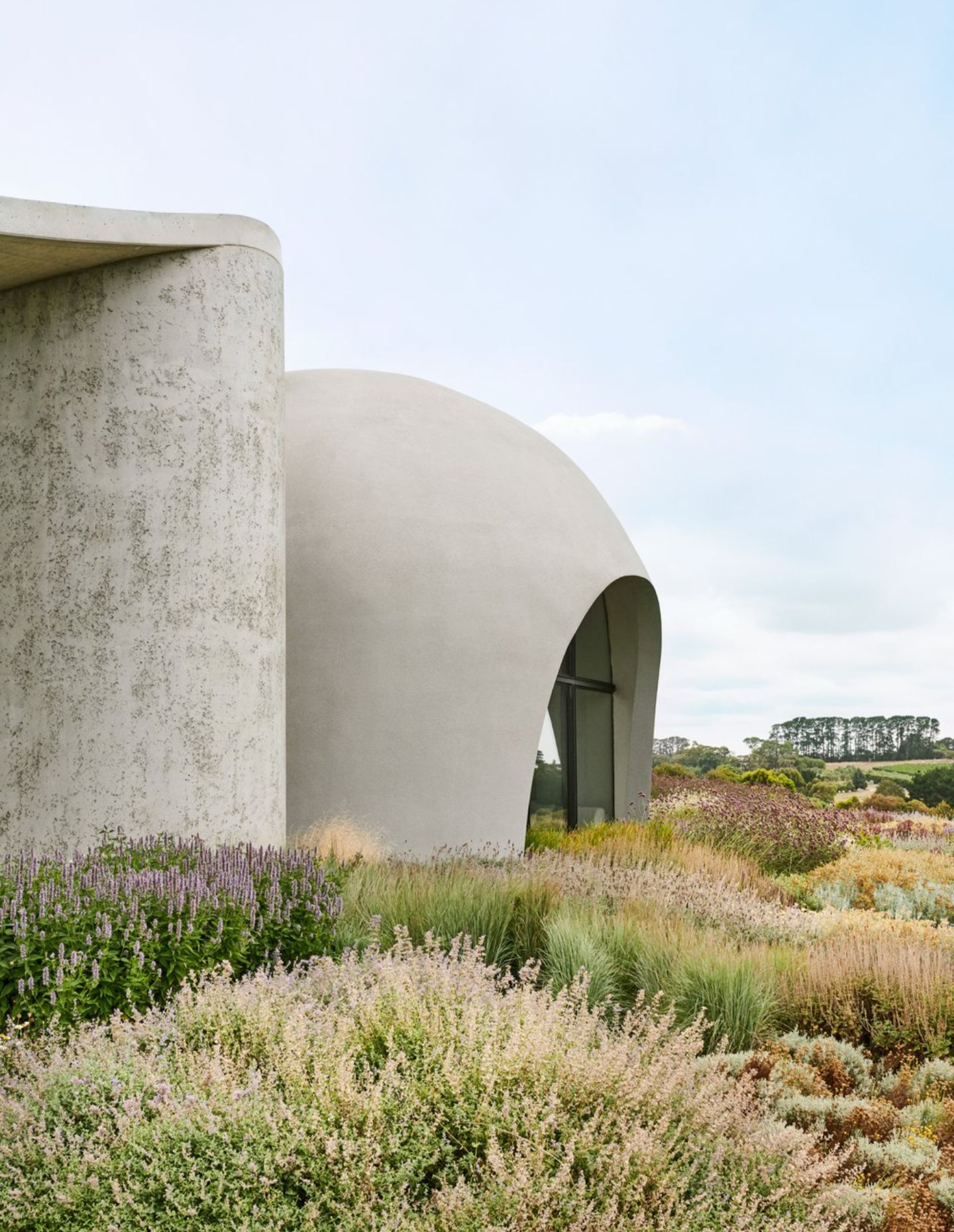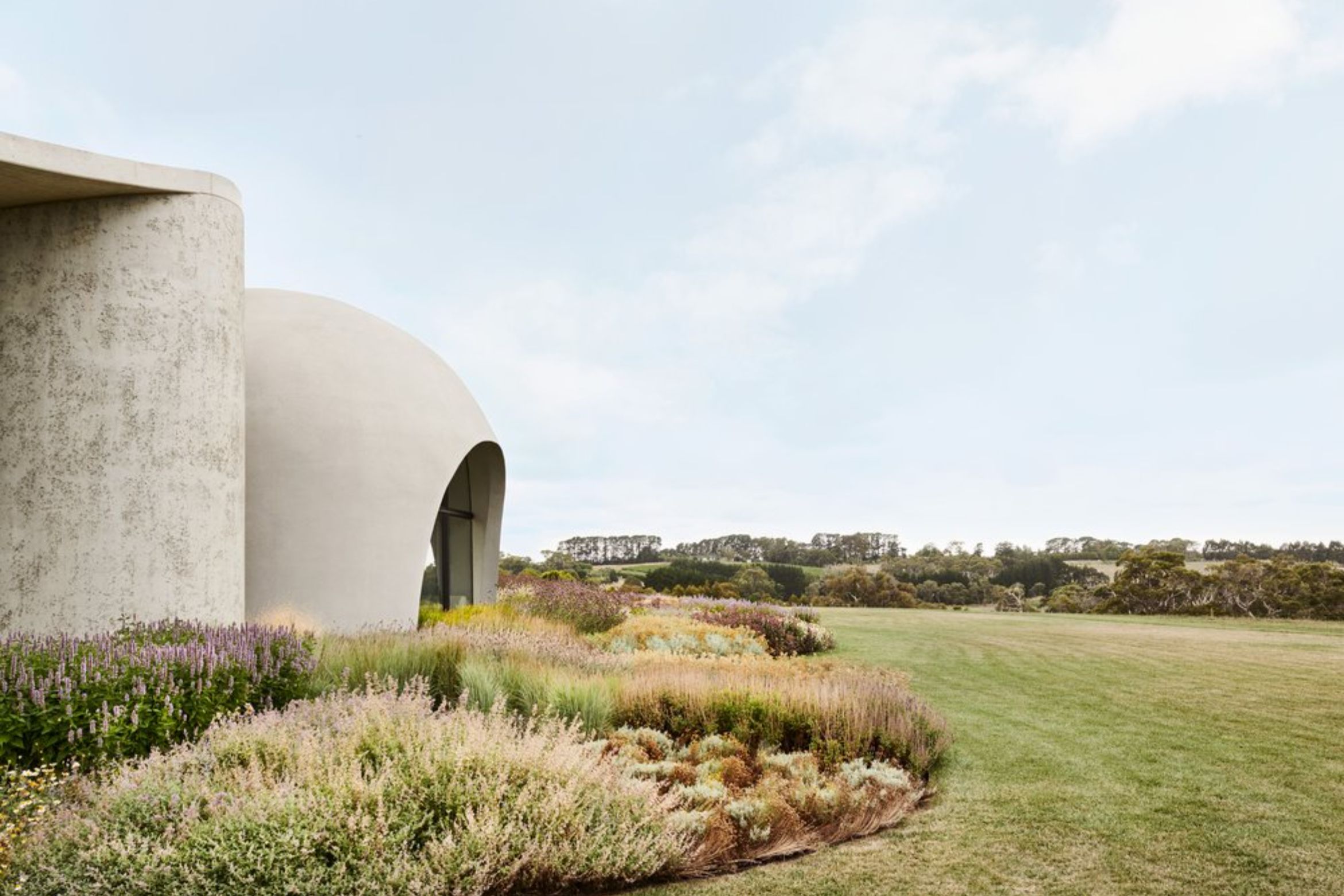Nestled on Bunurong Country on Victoria’s Mornington Peninsula, House on a Hill is conceived as a multigenerational home that both nurtures its inhabitants and protects them from the region’s harsh, windswept environment. Designed with flexibility at its core, the home is made to adaptable – specifically, to cater for two residents, extended family, social and corporate gatherings, as well as the functional requirements of a working farmhouse supporting vineyard and livestock operations.
What sets this project apart is its ability to feel nurturing while withstanding the harsh, windswept environment of the peninsula. Robust, sustainable materials anchor the house for longevity and reduced carbon footprint, while gentle curves, natural timber and stone bring warmth and intimacy. This balance of strength and softness ensures that the architecture is both durable and deeply human.
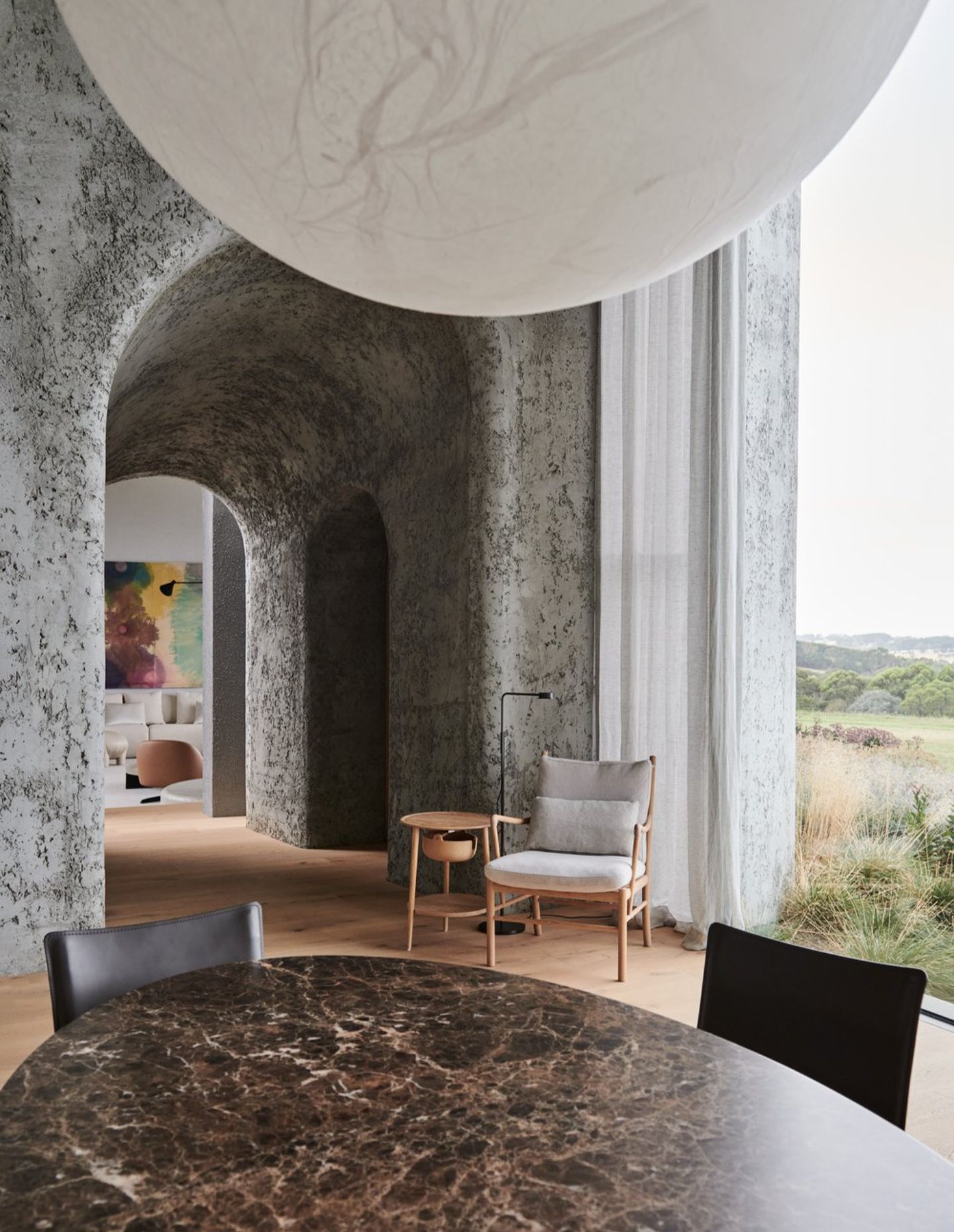
The interiors reveal a masterful balance between openness and intimacy. Expansive, light-filled spaces encourage connection, while subtle zoning ensures privacy and calm. Combined with the materials, the result is an interior environment that is as resilient as it is refined, creating a sensory experience where light and shadow, sound and silence, transparency and opacity co-exist in harmony.
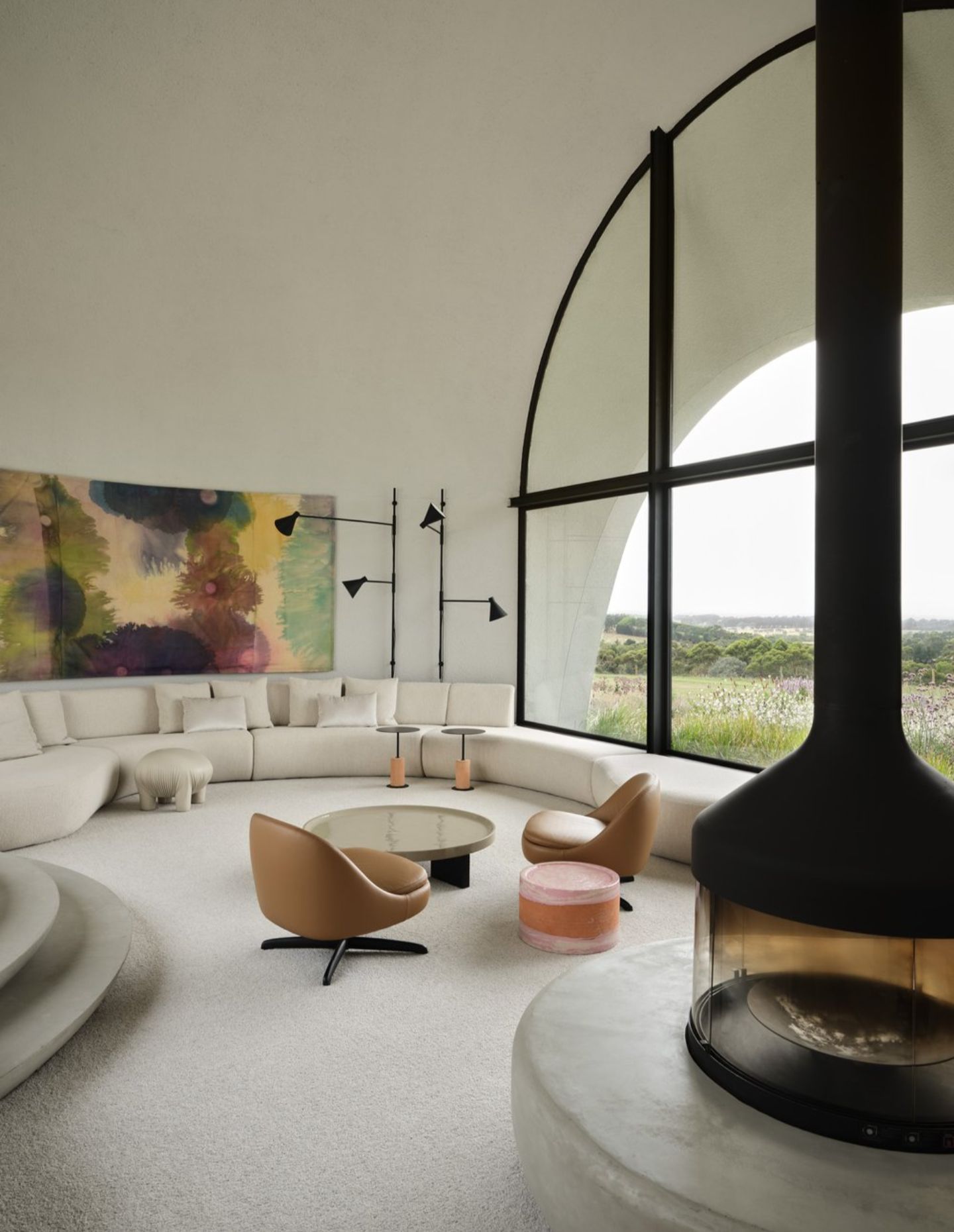
House on a Hill was delivered within budget yet exceeded client expectations, testament to the strong collaboration between the design team, consultants and builder. Every detail speaks to restraint and purpose, offering a tangible sense of sanctuary. The project embodies an architectural expression that feels both abstract and serene.
Related: Lara Maeseele’s oceanside Tasmanian house
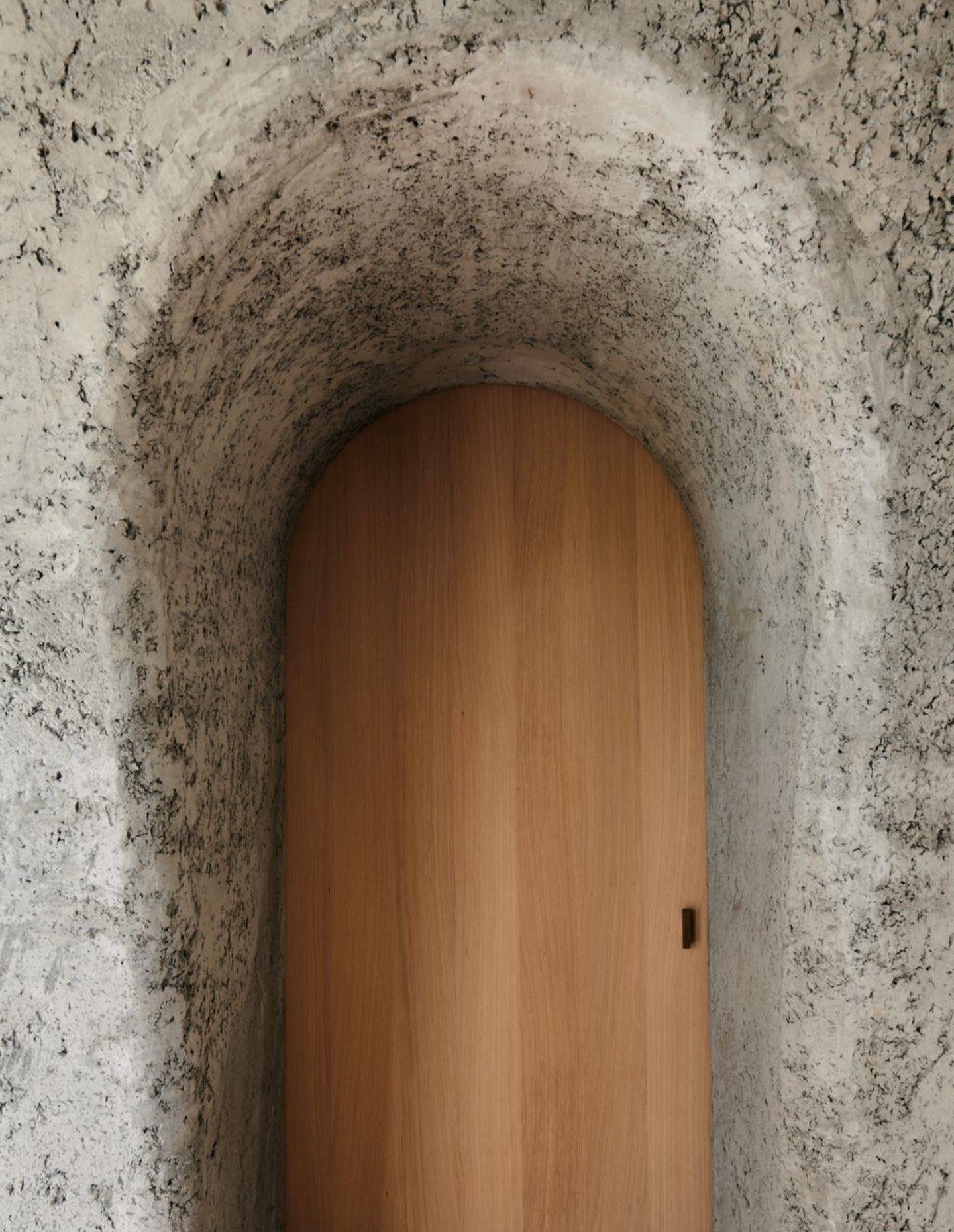
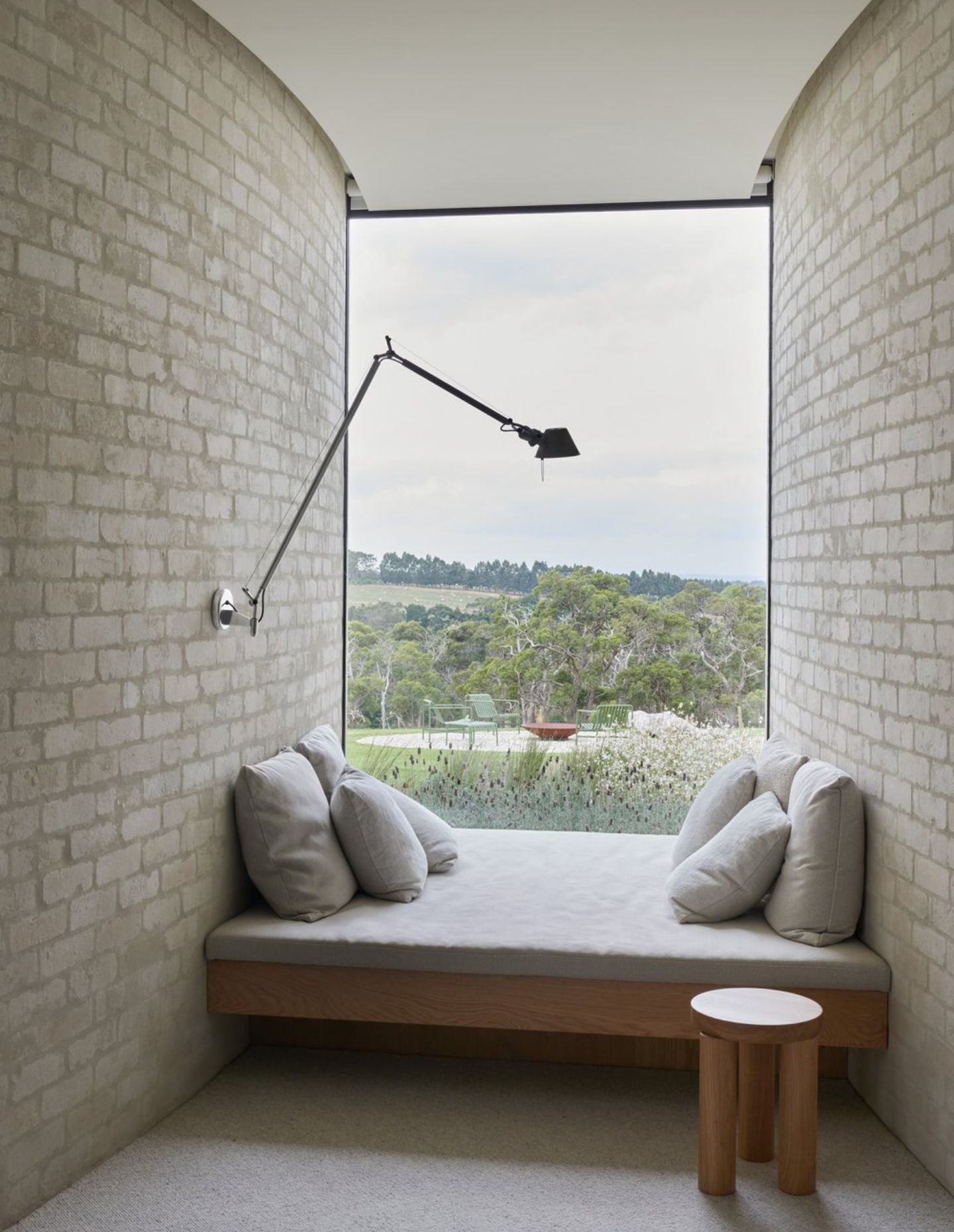
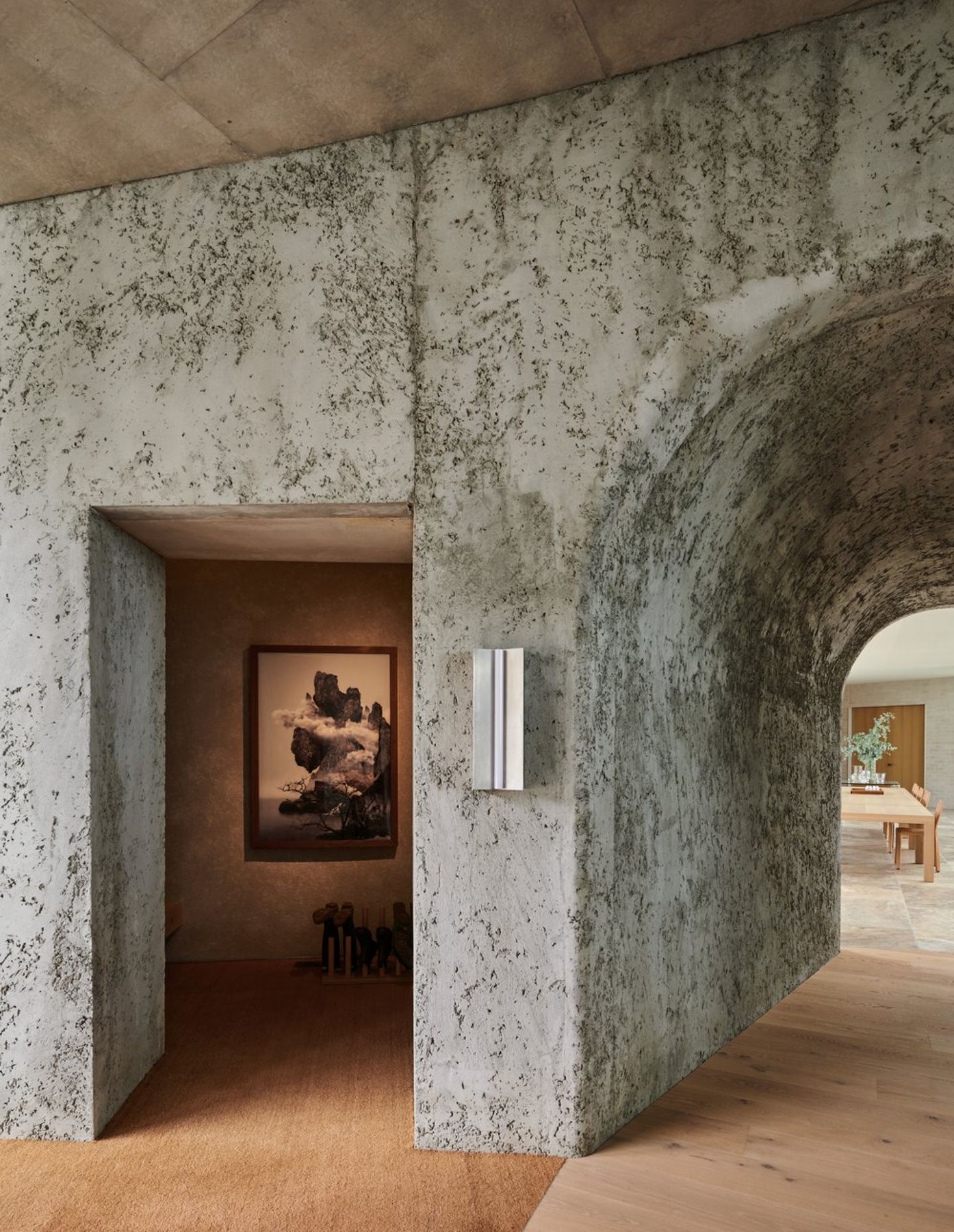
The design of House on a Hill engages in a constant dialogue between contrast and harmony. Transparency and opacity, light and shadow, sound and silence; all are carefully orchestrated to heighten the sensorial experience of the home. Subtle zoning allows for privacy and separation of uses without sacrificing openness and generosity, creating a spatial rhythm that adapts to its inhabitants’ shifting needs.
